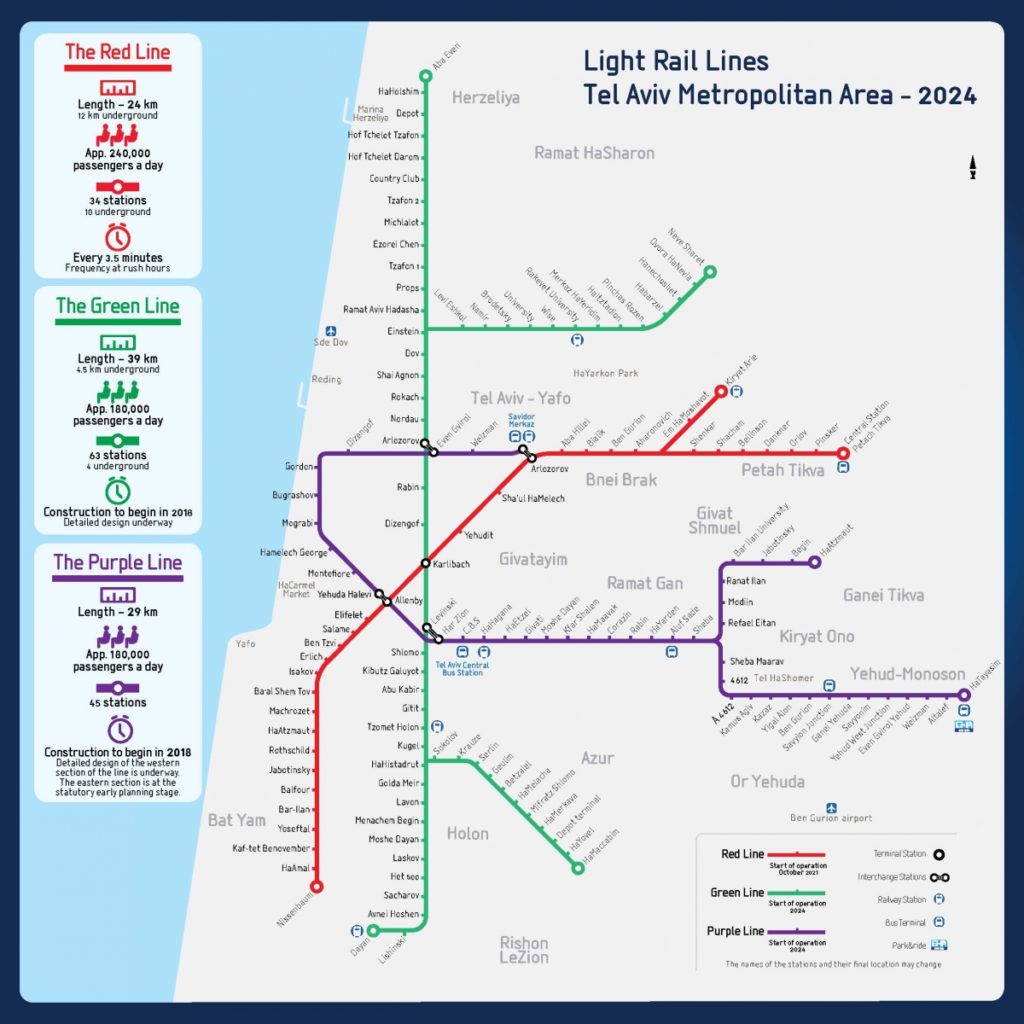The new network of light rail lines across the Tel Aviv Metropolitan Area will not only relieve traffic congestion throughout central Israel, but it will also change the real estate market in the towns that it connects.
The long-awaited Tel Aviv Metropolitan Area Mass-Transit system is now under construction, starting with nine underground rail stations being built in central Tel Aviv along what is known as the Red Line. These stations will be connected by a light rail network across the city, with multiple train lines reaching out to connect the surrounding suburbs and towns, in addition to and intersecting with the existing bus route network.
Tel Aviv–Jaffa is already Israeli’s largest metropolis, having absorbed many of the surrounding towns into its suburbs. The planned train system will enable commuters to live and work in different towns and to travel to work on public transport instead of sitting in traffic jams.
The Red Line will connect Petach Tikva, Bnei Brak, Ramat Gan, Tel Aviv–Jaffa and Bat Yam. The next line slated for construction is the Green Line, connecting Herzliya, Tel Aviv, Holon and Rishon LeZion. Simultaneously, work will start on the Purple Line, connecting Yehud, Or Yehuda, Ramat Gan, Tel Aviv, Kiryat Ono, Givat Shmuel and Petach Tikva. The Green and Purple lines are planned to open in 2024. Four additional lines are planned, eventually connecting more towns to the commercial heart of the country.
Tel Aviv’s New Red Line
The Red Line will be the first to open, hopefully in 2021. It will start in Petah Tikvah and continue along Jabotinsky Street in Bnei Brak, and through Ramat Gan. The tracks will continue to the Arlozorov train station, run along Begin Street and near the Azrieli Center, from where they will head south of the Kirya to Manshiyya and Jerusalem Boulevard in Jaffa, ending in the southern suburb of Bat Yam. In the future the line may be extended to meet the Moshe Dayan road interchange in Rishon LeZion.
The Red Line will cover a route of 24 kilometers, including 11 kilometers of underground lines running beneath the streets of Tel Aviv. Twenty-four of the stations will be above ground, and 10 are being built underground. The plan is for trains to run 90 seconds apart during rush hours, and three to four minutes apart during off-peak times.
Planning Ahead
Anyone considering investing in real estate in Israel should check out the plans for the various rail lines and look for properties within walking distance of the planned stations. There is no doubt that proximity to the Tel Aviv Metropolitan rail network will increase the purchase and rental value of properties as commuters discover the benefits of light rail travel in Israel.
Talk to Shaun Isaacson today about opportunities for great real estate investments in Israel, and how we can help you to purchase and manage your properties in Israel for profit.

